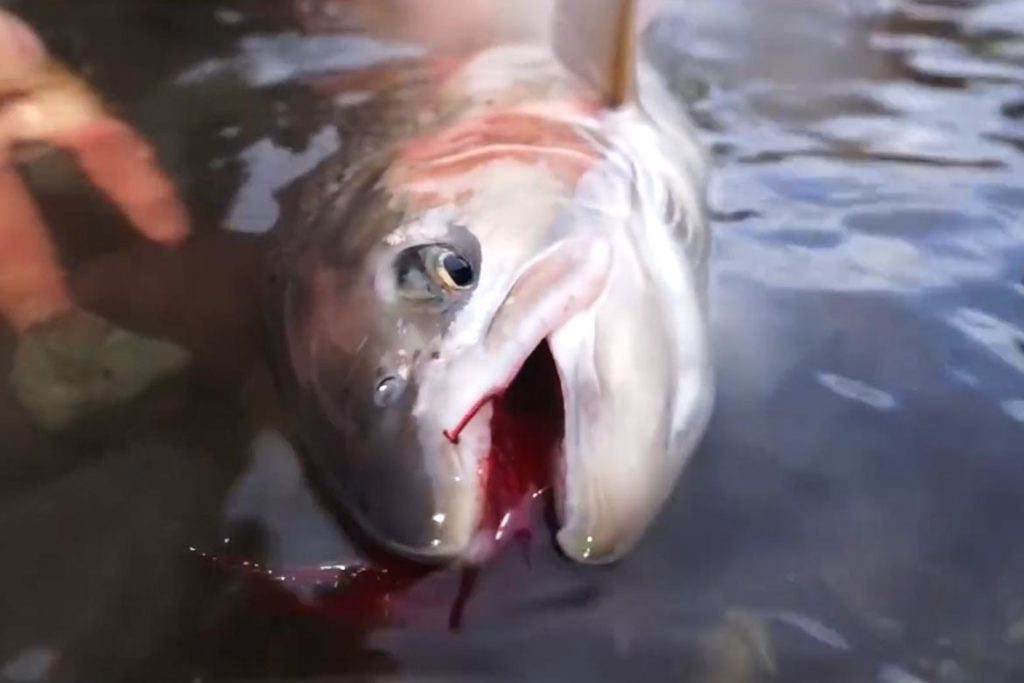Once again, Guys, we are sharing a video and asking for help. Just can’t stand aside! This time a vide of help from Arbiter Creative. Skeena river and all it’s unique environment are under huge threat – gas companies with their pipelines would destroy this fragile ecosystem. Skeena river is a cradle for juvenile salmon. In it’s waters these increadible fishes make a magic physiological transformation – they begin their adaptation from fresh water to salt water. Pipelines would destroy this cradle. But Skeena river is necessary not only for salmons, also it’s a home for many other incredible fishes such as steelheads and chars. It’s a homeland for wolves, minks, bears and grizzlies. It’s a place of stunning beauty. Wils Skeena river must be saved for us. For future generations. For Salmons.

From the filmmakers:
How you can help in under 30 seconds.
Share The Film & Speak Up
vimeo.com/158591490
Sign the Declaration
LeluDeclaration.ca
Sign the SumofUs Petition
action.sumofus.org/a/reject-petronas-lng/?sub=homepage
Learn More or Donate
SkeenaWild.org
Produced by arbiter-creative.com
bo@aribter-creative.com
River Wide is a fly fishing film about the Skeena River and a current environmental issue that threatens the entire west coast salmon population; the Pentronas (LNG) liquid natural gas facility on Lelu Island at the base of the Skeena River.
The estuary is the ecosystem where juvenile salmon make the physiologically challenging transition from fresh-to salt-water. Because all salmon must travel through the estuary, all salmon rely on this habitat, even if they spawn hundreds of kilometers upriver. Thus, a productive and intact Skeena River estuary supports salmon populations that support fisheries that operate throughout the watershed.
Science has found that estuary ecosystem health is connected to salmon population vitality. Previous research has documented that loss of estuary habitat leads to dramatically lower survival of salmon. A study of 27 estuaries in western North America found that Chinook salmon survival was 1/3 lower in degraded estuaries compared to pristine estuaries.
Along with the water and air pollution at the estuary, the pipeline would cross over 1000 watercourses & with more than 40 ruptures in Canada in the past 25 years, the risk of environmental contamination is high.
LNG facilities also emit nitrogen oxide leading to smog and particulate matter that can cause asthma, chronic bronchitis, emphysema, cardiovascular disease and acid rain.
As of oct 2nd 2015, the petronas proposal is still moving forward, but is facing enormous resistance from lax Kw’alaams first nations members, who are occupying lelu island & exercising their rights to the land.
But right now, we have one week to stop this project from happening.
Our new government promised it would protect the environment, respect Indigenous rights and listen to scientists. It promised to put Canadians first — not profit for foreign corporations. The government has a public comment period open right now, and it if we flood it with comments, we can make sure this disastrous project is never built.
**********
More information:
The Stand at Lelu Island: B.C. First Nations vow to halt LNG project, Ricochet, Nov 5, 2015
Open Letter from Donald Wesley, a Hereditary Chief from Lax Kw’alaams First Nation, Nov 9, 2015
Produced by Arbiter
arbiter-creative.com
Contributors
Josh Blasman
Bo Roberts-Leung
Ivan Sharko
Brian Niska
Greg Knox
Julia Hill
Quinn Barabash
